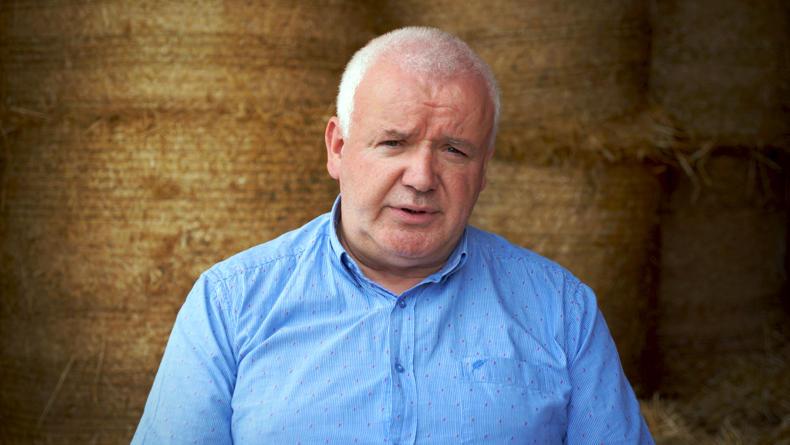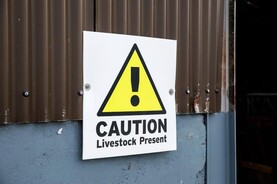Aengus Mannion is from Co Sligo. Originally, he was involved in beef cattle production. In 2009, he was in an on-farm accident involving a teleporter.
On the evening of the accident, Aengus went into one of the fields to repair a fence. “I took the teleporter with me that evening, jumped off the teleporter, took my eye off of it and the teleporter moved. I didn’t see it coming and in a split second I was impaled into a tree.”
Despite the accident occurring beside a public road, Aengus was trapped for almost 80 minutes, “It’s a very busy road. I was only five, ten feet from it. But I was behind a hedge and nobody could hear me. An elderly lady actually lived not too far from where the accident happened, heard the screams of my voice. They alerted the emergency services then.”
That night, Aengus spent almost eight hours in theatre. “Since then I have been in hospital between Sligo and Dublin. I’ve had 29 operations, and here I am, I still have my two legs.”
“I was very physically active on the farm before the accident. That’s all changed. There’s good days and there’s bad days. I had to get a home for myself where I had ground floor accommodation.”
Aengus believes that changes on farms need to be made, “I do believe the on-farm thing, with people working on their own, around animals and machinery nowadays, has to stop or we’re going to have more and more accidents. Cattle was my game, machinery wasn’t.”
Aengus believes that you need to be vigilant at all times on the farm: “What did I do? Kept my eye on the cattle, took my eye off the machine and I paid the price. I should’ve had somebody with me. You don’t want to go through what I went through. I’ve come through horrific stuff. There’s times I felt like giving up. You know, even the doctors, there’s times they don’t know how I came through a lot of it.”
Aengus feels that there is much more to accidents than just the physical injuries, “There’s a lot of people who suffer a lot from depression. It’s the families that suffer as well, because, I mean, they don’t expect you to come back home in a wheelchair or maybe with arms, legs lost or something. Whatever it is. And they don’t know how to cope with the situation and there’s a psychological thing there for them as well. When I came home that time, in a wheelchair, I failed away back to six, seven stone. I didn’t want people to see me. I wouldn’t even let people visit me at home.
“There’s still good days and bad days, but we’re getting there every day. When you’re in a hospital environment you’re nearly getting institutionalised. There’s nobody around. The hospital staff are all gone. And that’s when it really hits. I discovered the organisation called Embrace FARM, and they’re great support.
“I do a bit of work with people and I get involved with people who have suffered with serious illness or accidents to try and help them. The message is there.
“Just we have to be safer. We have to look after ourselves and be more cautious. With animals nowadays. They’re so highly strung. Machinery is so powerful. Doing any work with animals, you have to have somebody with you.”
Gabe Cronnelly lives in Athenry, Co. Galway. On 28 December 2009, Gabe was involved in an accident that would have lasting effects.
“It was the 28th of December. It’s a date that sticks out in my head because my young fella’s sixth birthday would’ve been the very next day.”
“I suppose a big factor at the time of the accident was that it was the first of the bad winters in 2009.
We decided to go down the fields. The one thing about it is nobody ever knows at all and you can never be too careful.”
“I hit the ground and I knew it was quite serious. The fact that I had done occupational first aid, I made a tourniquet, trying to stem the blood flow. I can only thank somebody up there that I knew what to do and how to do it until one of the local guards and the local doctor came.”
“In the space of 10 weeks, I had thirteen operations to save my leg. The fourteenth operation was to amputate it. When I heard that my leg was going to be amputated, I took it fairly hard. I know now that the doctors and specialists had done everything that they could to save my leg. I remember waking up to see how much of my leg was gone. I nearly kicked myself in the head with the stump of my leg. There was only about a foot left of it. I had to learn how to walk twice. I can’t remember the first time, but I can the second time. I couldn’t work at what I used to work at.”
“I can’t really carry much now. I try and have my arms free at all times. I can be a bit prone to falls. The accident replays in my head, and you have to live with that. You know, a lot of people mightn’t talk about it. I have no issues in talking about it. I would have never believed I would be one that would have my leg amputated.”
“I ran for election in 2014, and I got elected at Galway County Council. I got re-elected there again a couple of weeks ago, and currently deputy mayor of Galway County Council. A lot of my work in there, is to do with people with disabilities. And I’ve gotten involved with EMBRACE Farm. It’s a kind of support group, for people who have survived life threatening injuries through farm accidents, and various different accidents. I find it absolutely brilliant.”
“Never ever be afraid to talk to people. I suppose I thought I was mad, thinking people wouldn’t understand me, but I have people around me now that I can speak to.”
“If anybody gets any one thing out of this, do you know, that makes and highlights safety, this has been a worthwhile experience. No one’ll every give out to you for being too careful. They will give out to you for being careless.
The Safe Family Farms programme is a joint initiative between Irish Farmers Journal and ESB Networks. We would like to thank ESB Networks for their continued support.
Click here to view more of our Farm Safety video case studies.







 This is a subscriber-only article
This is a subscriber-only article










SHARING OPTIONS: